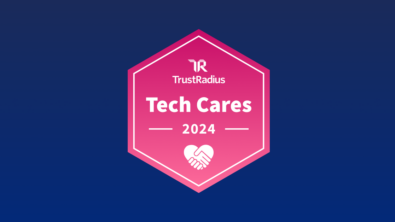A brief history of data management
26 years ago I started my first job for a CAD company, Intergraph UK, who were just transitioning from offering a VAX based solution to a UNIX based solution. At that time Intergraph designed and built their own processors, monitors and workstations as well as creating the software! I was immediately interested in the data management issues faced by our CAD users and worked on a solution called I/PDM that supported Intergraph’s I/EMS solid modeling solution. It seems strange today but I/PDM ran on top of a general file management solution (I/NFM) that itself ran on top of a database interface (I/RIS) and then the database itself, which was either Informix of Oracle. Despite this complexity I/PDM seemed to do a good job for many customers in managing their EMS files and creating bill-of-materials data for output to manufacturing.
In 2000 Smarteam was the new kid on the block offering a Windows based solution for data management and integrating with the popular CAD solutions of that time including Autocad, SolidWorks and Solid Edge. I worked for Smarteam for 6 years and a strength of their approach was the excellent tools they offered for configuring your database, laying out the user interface and for designing workflows. Customers were often surprised at the speed with which we could configure the system to meet their needs.
Today I market data management solutions for Solid Edge including Teamcenter and our SharePoint based solution Solid Edge SP, both of which do a terrific job for Solid Edge users, especially when the implementations are well planned and executed. One area where I feel that data management solutions have improved significantly is in providing a more visual approach to managing complex data as shown in this screenshot from Solid Edge SP.
Today we have an eye on the new cloud based solutions that we see being offered and I was reading some research from Tech-Clarity titled“The Basics of Managing CAD” that discusses both traditional PDM solutions and cloud based solutions, and concludes that” The market is ready for a new class of cloud solutions that are easier to implement, less costly, and require no IT resources. While they may not provide the full value and capabilities that traditional systems offer, they come with reduced barriers to entry and lower TCO and make CAD data management practical for a much wider array of companies.” Maybe you will agree with me and think that the whitepaper focuses more on the characteristics ofthe newer “green- field” cloud solutions and does not really examine what cloud-based versions of proven PLM solutions like Teamcenter on the Cloud have to offer.
I recently tried one of these newer cloud solutions for myself, GrabCAD Workbench, and as it says on the tin, within about 10 minutes of signing up for a trial I was uploading Solid Edge assemblies and drawings and using GrabCAD’s tools to navigate around, view and markup my design data. An excellent user experience that I would really like to explore more, but it did leave me wondering if this is a real alternative to established data management solutions. A couple of questions that occurred to me were: can I relate other types of design data to my Solid Edge files? And how does it manage revisions of parts that are referenced in multiple assemblies?
I am looking forward to finding out more about GrabCAD and discovering the answers to these questions at our Solid Edge University event in Atlanta. We are excited to have GrabCAD’s CEO Hardi Meybaum at the event where he will be talking about how “open engineering” helps teams move faster, and discussing the tools and processes that engineering teams can utilize at each step of a design project, from leveraging online communities and generating new ideas, to web-based design collaboration and rapid prototyping. Hardi will also talk about the Razor Kickscooter Design Challenge that was hosted by GrabCAD and co-sponsored by Siemens and Keyshot.Contestants used Solid Edge to model their scooters, KeyShot to render an attractive product image, and GrabCAD to share their entries on the cloud. You can see some of the excellent winning designs here.
Well that was an ambitious title for a blog post. If you got this far I hope you weren’t too disappointed!





